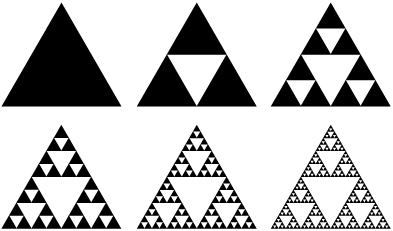"Perfect. I'm now going to read you another snippet from Conversations With God. I want you to find the next dot to connect."
In rendering the universe as a divided version of Itself, God produced, from pure energy, all that now exists — both seen and unseen. In other words, not only was the physical universe thus created, but the metaphysical universe as well. The part of God which forms the second half of the Am/Not Am equation also exploded into an infinite number of units smaller than the whole. These energy units you would call spirits. In some of your religious mythologies it is stated that “God the Father” had many spirit children. This parallel to the human experiences of life multiplying Itself seems to be the only way the masses could be made to hold in reality the idea of the sudden appearance — the sudden existence — of countless spirits in the “Kingdom of Heaven.”
In this instance, your mythical tales and stories are not so far from ultimate reality — for the endless spirits comprising the totality of Me are, in a cosmic sense, My offspring.
My divine purpose in dividing Me was to create sufficient parts of Me so that I could know Myself experientially. There is only one way for the Creator to know Itself experientially as the Creator, and that is to create. And so I gave to each of the countless parts of Me (to all of My spirit children) the same power to create which I have as the whole.
This is what your religions mean when they say that you were created in the “image and likeness of God.” This doesn’t mean, as some have suggested, that our physical bodies look alike (although God can adopt whatever physical form God chooses for a particular purpose). It does mean that our essence is the same. We are composed of the same stuff. We ARE the “same stuff”! With all the same properties and abilities — including the ability to create physical reality out of thin air.
Neale Donald Walsch
I looked up at Zac. "Did you find it? Can you connect the dot to our model?"
"Umm…" he hesitated. "It's something to do with each soul being made in the image and likeness of God, right?"
"Yep," I said. "We know God is a neural network. We know souls are Markov blankets. We also know each soul is made 'in the image and likeness of God.' When we translate that concept into scientific language, that's like saying 'the algorithm is recursive.'"
"Can you explain what you mean by 'recursive?'" Zac asked. "You briefly mentioned it before, but I'm not sure I'm fully across it."
"Sure. In computer programming speak, recursion is a function that calls itself. I'll explain what that means in layman's terms. Here we have a single main folder on our computer. Nested in this main folder is a hierarchy of files and subfolders. We need to write an algorithm that will count how many files exist within the main folder."

"Now," I continued, "when we look at this problem, we notice that it can be broken down into sub-problems. Each sub-problem is exactly the same as the main problem. So, if you were going to give me verbal instructions on how to count the files, what would you tell me?"
Zac took the notebook into his hands and thought for a second. "I'd say 'Go into the main folder and count the number of files in there. When you come across another folder, just repeat-" He paused. "Ohhh... I see. You just repeat the same process for all the subfolders until you don't come across any more folders, and have therefore counted all the files."
"Exactly," I said. "If you were to translate those instructions into computer code — which is essentially an algorithm — the logic would look something like this..."
Start the tally at0files.
Step 1: Enter the folder.
Step 2: Count the number of files you see.
Step 3: Add that number to the total tally.
Step 4: When you come across another folder, return toStep 1.
"This is a recursive program. Give the computer those simple instructions, point it towards the main folder, and tell it to go fetch. It will run around the folders, following those instructions, then happily return a final count to you. You could give it a hierarchy of a million folders to search through, but with that simple recursive algorithm, it could get the job done.
A Sierpiński triangle is a great visual representation of recursion. Every time you see an equilateral triangle with a single vertice facing up, draw an equilateral triangle in the center with a single vertice facing down. You can continue doing this forever."

"That's pretty cool," Zac said. "So simple, but you can do so much with it."
"Exactly!" I exclaimed. "If every Markov blanket in the universe is optimizing for the same thing, this implies something amazing: that all the laws of nature derive from one simple, recursive algorithm. One little program is being repeated within every Markov blanket in the network. If we find that little piece of math, we solve the riddle."
"Hold on," Zac paused. "Why, exactly, do we think we're looking for a recursive algorithm? Is it just because this God guy said he split himself into a gazillion parts, with each part being made in the image and likeness of the whole? That doesn't sound very scientific."
"No," I replied. "It's much more than that. We've deduced, from first principles, that reality is arising from a lower dimension — an implicate order, where space and time cease to exist. This is a holographic property.
We also have other tell-tale signs that holographic principles are at play. Our universe is in the dream of a superintelligence, but we can also dream up universes inside our own minds. This concept of dreams within dreams is a holographic property. It's recursive. Plus, there are tons of other holographic patterns in nature, in altered states of consciousness, in 'miracles', in mental illness.
One holographic property is this: every part contains the whole. You can slice a hologram into a thousand parts, and we'll find the same pattern in each part. It seems logical, then, that if reality is functioning on holographic principles, we might see a holographic pattern playing out in the underlying computation. A holographic, recursive algorithm is such an elegant, symmetrical — yet powerful — solution to this riddle.
Any physicist can tell you that simplicity, elegance, and beauty permeates the mathematics of the universe. It's almost as if the universe were designed by an infinitely intelligent mathematician — which, based on our analysis tonight, it was! In fact, the universe literally is an infinitely intelligent mathematician, observing itself.
Of course, a holographic algorithm is a nice conceptual idea, but there is also empirical evidence to support it. A man named Stephen Wolfram has been studying simple recursive programs for many decades, and is now thoroughly convinced that our universe is running a recursive computation."

